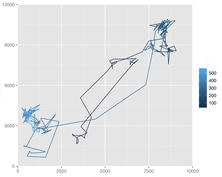Publication trimestrielle du Laboratoire
d'analyse et d'architecture des systèmes du CNRS
Ion Implantation-Induced extended defects: structural investigations and impact on Ultra-Shallow Junction properties.
This dissertation summarises my research activities in the field of Ion Implantation-Induced extended defects and of their impact on the properties of Ultra-Shallow source/drain junctions (USJs) in MOS transistors. The interactions between the defects and the implanted dopants are at the origin of the diffusion and activation anomalies that represent the major obstacles to the fabrication of USJs satisfying the ITRS requirements.
The first part is dedicated to the fundamental studies on the formation and evolution of defects and on their impact on transient enhanced diffusion (TED). These studies contributed to provide a unified description of defect evolution, and improve the existing models by extending them to all defect families, including a correct TED dependence on the defects’ size.
In the second part, I focused on the defect-dopant interactions causing dopant activation anomalies. In the case of p+-n junctions, these anomalies are due to the formation of small Boron-Interstitial Clusters (BICs), which have been at the centre of all the studies presented in this part.
The third one is dedicated to the advanced processes and materials recently introduced in the semiconductor industry and the associated issues concerning USJs fabrication, including defect formation during ultra-fast annealing, their evolution in SOI or the Boron activation stability in Germanium.
The last chapter is dedicated to the presentation of the perspectives of my research activity within the newly defined “extended-CMOS” context, arising from the convergence of the classical More Moore domain with the growing More than Moore one.





